Coral atolls are enchanting formations that emerge from the depths of the ocean, encircling turquoise lagoons with their vibrant coral reefs and pristine white sandy beaches. These natural wonders are not only breathtakingly beautiful but also serve as vital ecosystems, supporting a diverse array of marine life and playing a crucial role in the health of our oceans.
Formed over millions of years by the patient construction of tiny coral polyps, these atolls are living monuments to the resilience and adaptability of nature. As climate change and human activities pose increasing threats to these delicate ecosystems, it has become imperative to raise awareness about their significance and the urgent need for their conservation.
In this article, we will embark on a journey to explore the top 12 largest coral atolls in the world, unveiling their geographical locations, unique features, and the remarkable biodiversity they harbor. From the vast expanses of the Kwajalein Atoll to the stunning ring-shaped islands of the Maldives, these atolls are not only natural wonders but also vital refuges for countless species and invaluable resources for the communities that depend on them.
Kwajalein Atoll

Situated in the Marshall Islands, the Kwajalein Atoll is a true colossus among coral atolls, spanning an incredible 1,360 square kilometers (525 square miles) in area. This vast atoll comprises 97 islands encircling one of the largest lagoons in the world, with a depth reaching up to 244 meters (800 feet).
The Kwajalein Atoll is not only a marvel of nature but also a strategic location, serving as a crucial military and missile testing site during World War II and the Cold War era. Despite its tumultuous history, this atoll remains a haven for diverse marine life, including vibrant coral reefs, sea turtles, and a wide variety of fish species.
Huvadhu Atoll
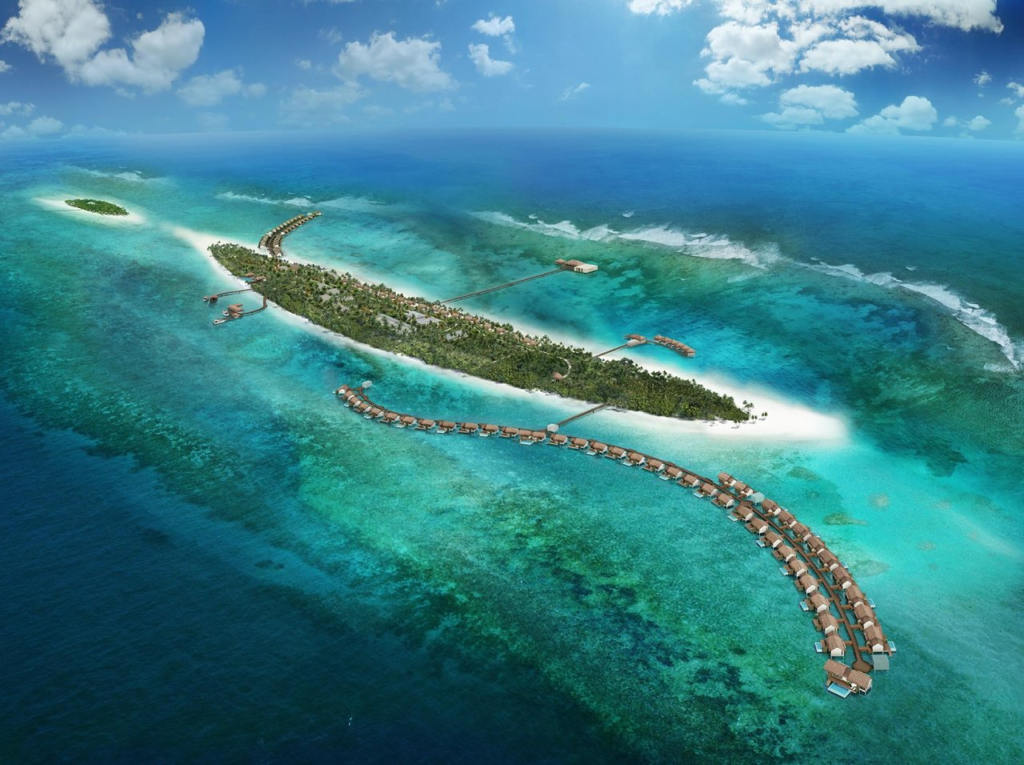
Located in the southern reaches of the Maldives archipelago, the Huvadhu Atoll is a breathtaking expanse of coral islands and lagoons. Spanning an area of approximately 1,150 square kilometers (444 square miles), this atoll is home to over 225 islands, many of which are uninhabited and pristine.
The Huvadhu Atoll is renowned for its rich marine biodiversity, boasting vibrant coral gardens, colorful tropical fish, and a variety of sea creatures, including manta rays and whale sharks. Its remote location and pristine waters make it a sought-after destination for eco-tourism and diving enthusiasts seeking an unspoiled paradise.
Manuae Atoll
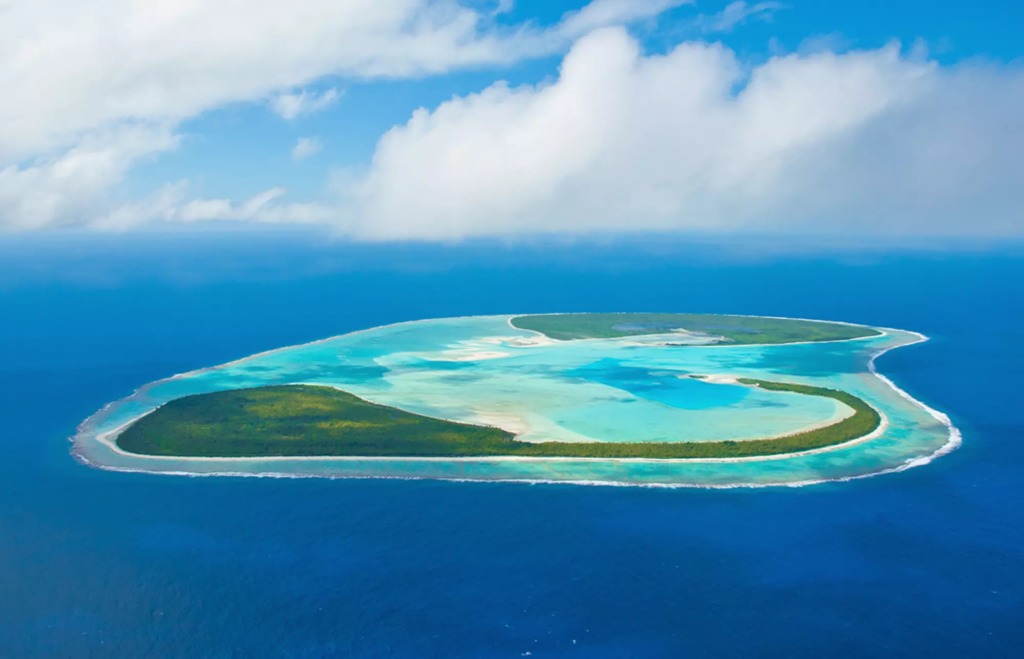
Nestled in the heart of the Cook Islands, the Manuae Atoll is a stunning coral formation spanning approximately 1,040 square kilometers (402 square miles). This vast atoll is renowned for its exceptional beauty, with its turquoise lagoon surrounded by an unbroken ring of islands and coral reefs.
The Manuae Atoll is a true sanctuary for marine life, providing a safe haven for countless species of fish, sea turtles, and seabirds. Its remote location and limited human presence have allowed this atoll to thrive, making it a prime destination for eco-tourism and scientific research.
Suvarov Atoll
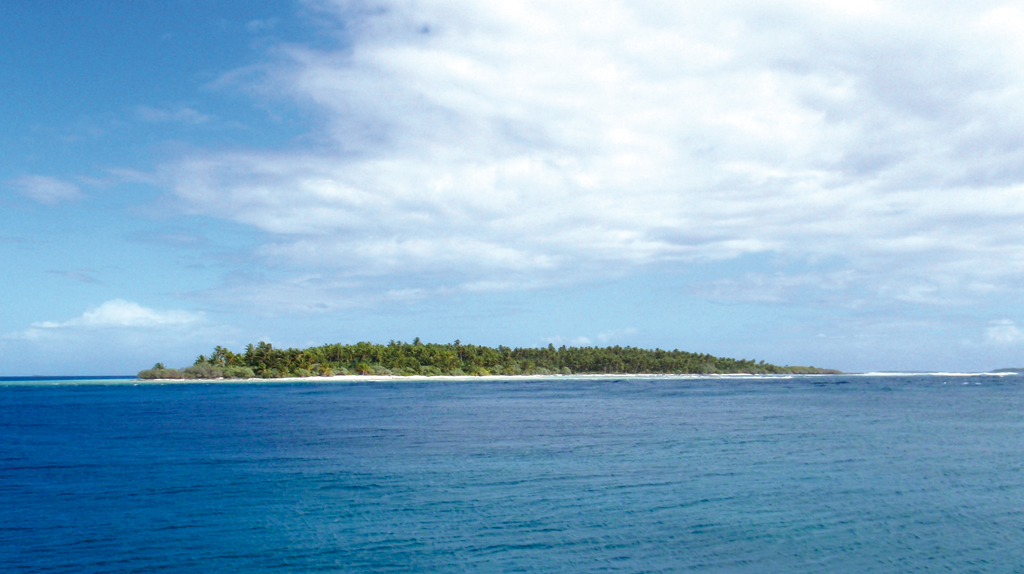
The Suvarov Atoll, also known as the Suwarrow Atoll, is a remote and pristine coral formation situated in the Cook Islands. With an area of approximately 850 square kilometers (328 square miles), this atoll is a true paradise, boasting crystal-clear waters, vibrant coral reefs, and a diverse array of marine life.
The Suvarov Atoll is renowned for its exceptional biodiversity, serving as a breeding ground for numerous seabird species and providing a sanctuary for endangered species such as the green turtle and the coconut crab. Its remote location and limited human impact have preserved its natural beauty, making it a prime destination for eco-tourism and scientific research.
Suvadiva Atoll
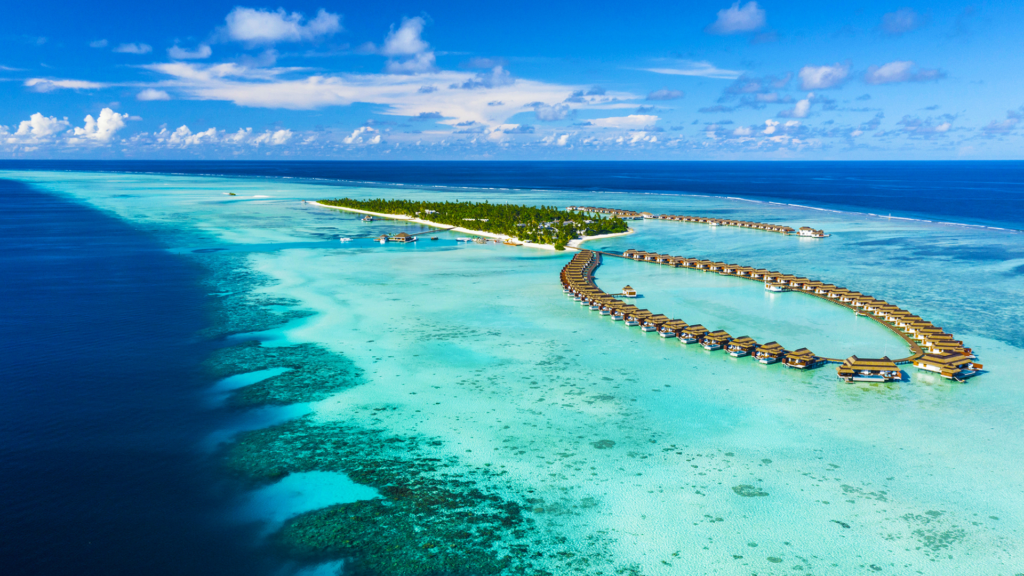
Located in the southernmost reaches of the Maldives archipelago, the Suvadiva Atoll is a vast expanse of coral islands and lagoons spanning an area of approximately 760 square kilometers (293 square miles). This atoll is comprised of over 200 islands, many of which are uninhabited and pristine, offering a true escape from the hustle and bustle of modern life.
The Suvadiva Atoll is renowned for its rich marine biodiversity, boasting vibrant coral gardens, colorful tropical fish, and a variety of sea creatures, including manta rays and whale sharks. Its remote location and pristine waters make it a sought-after destination for eco-tourism and diving enthusiasts seeking an unspoiled paradise.
Palmyra Atoll
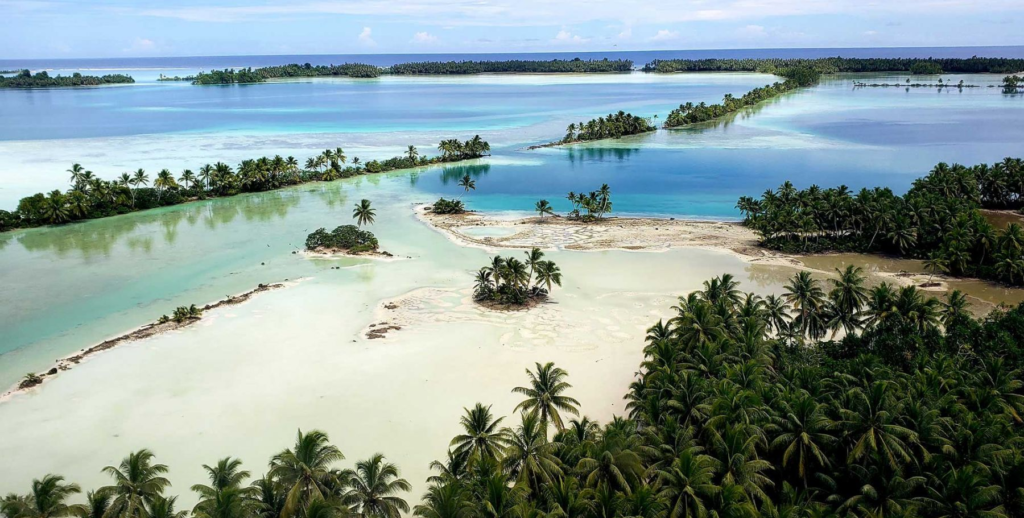
The Palmyra Atoll is a remote and virtually uninhabited coral formation located in the Northern Line Islands, approximately halfway between Hawaii and American Samoa. With an area of approximately 620 square kilometers (239 square miles), this atoll is a true natural wonder, featuring pristine beaches, vibrant coral reefs, and a diverse array of marine life.
The Palmyra Atoll is renowned for its exceptional biodiversity, serving as a breeding ground for numerous seabird species and providing a sanctuary for endangered species such as the green turtle and the coconut crab. Its remote location and limited human impact have preserved its natural beauty, making it a prime destination for scientific research and eco-tourism.
Rangiroa Atoll
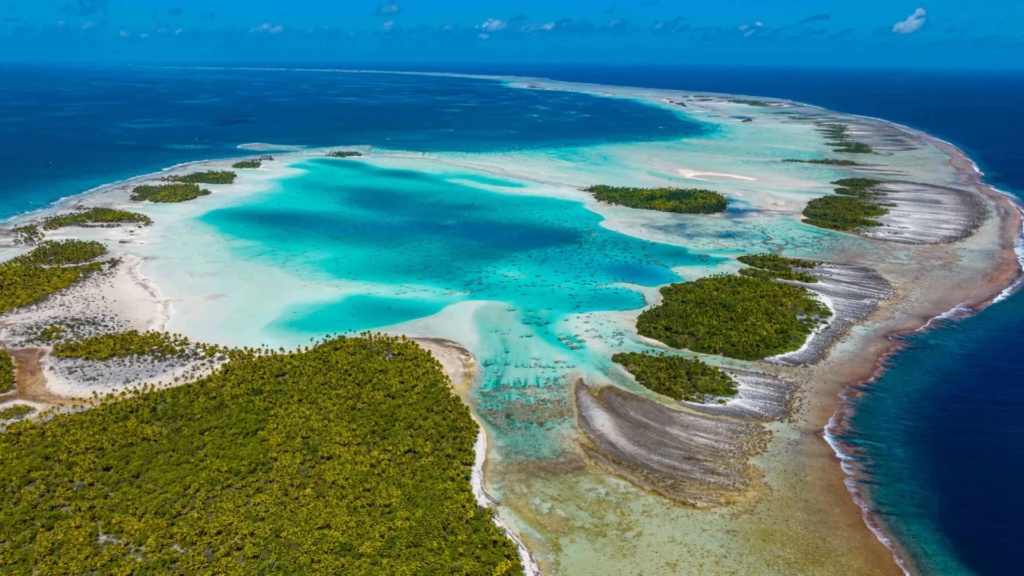
Situated in the Tuamotu Archipelago of French Polynesia, the Rangiroa Atoll is a vast and breathtaking coral formation spanning an area of approximately 580 square kilometers (224 square miles). This atoll is renowned for its stunning natural beauty, with its turquoise lagoon and vibrant coral reefs teeming with marine life.
The Rangiroa Atoll is a prime destination for diving and snorkeling enthusiasts, offering an opportunity to explore its diverse underwater ecosystems and encounter a wide variety of marine species, including manta rays, sharks, and vibrant tropical fish. Additionally, this atoll is home to several small villages, providing visitors with a glimpse into the rich cultural traditions of French Polynesia.
Fakaravian Atoll
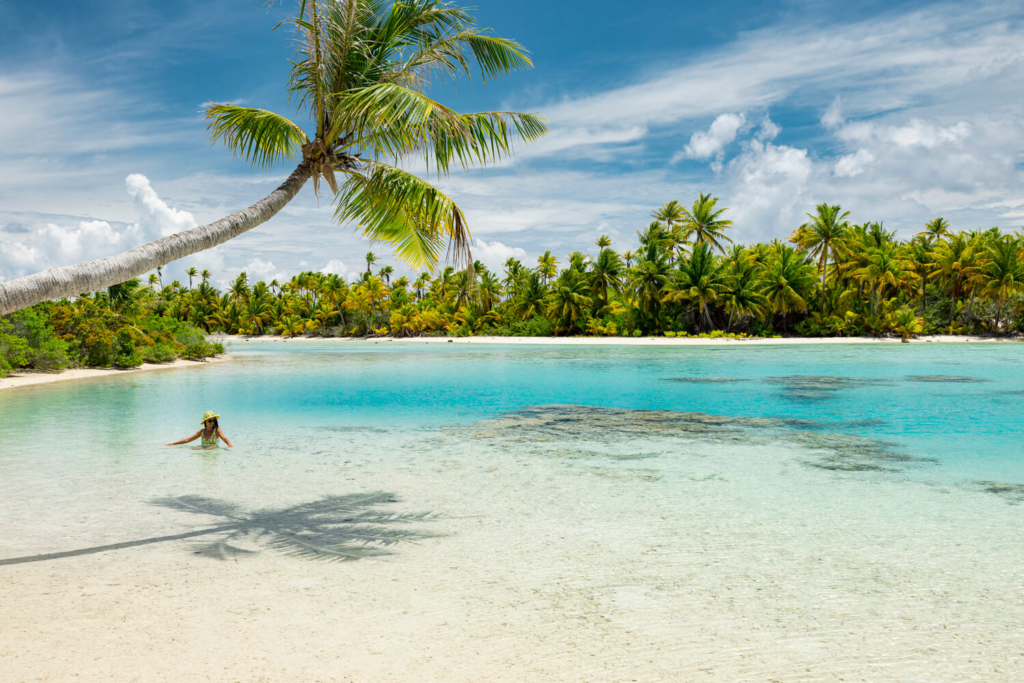
The Fakaravian Atoll, also known as the Fakarava Atoll, is a stunning coral formation located in the Tuamotu Archipelago of French Polynesia. With an area of approximately 540 square kilometers (208 square miles), this atoll is renowned for its exceptional beauty and rich marine biodiversity.
The Fakaravian Atoll boasts a vast and pristine lagoon, surrounded by vibrant coral reefs and beautiful sandy islets. This atoll is a true paradise for divers and snorkelers, offering an opportunity to explore its diverse underwater ecosystems and encounter a wide variety of marine species, including sharks, manta rays, and colorful tropical fish.
Farquhar Atoll

Situated in the Seychelles archipelago, the Farquhar Atoll is a remote and largely uninhabited coral formation spanning an area of approximately 470 square kilometers (181 square miles). This atoll is renowned for its exceptional natural beauty, with its crystal-clear lagoon and pristine beaches surrounded by vibrant coral reefs.
The Farquhar Atoll is a true sanctuary for marine life, providing a safe haven for numerous species of fish, sea turtles, and seabirds. Its remote location and limited human presence have allowed this atoll to thrive, making it a prime destination for eco-tourism and scientific research.
Aldabra Atoll

The Aldabra Atoll is a UNESCO World Heritage Site located in the Seychelles archipelago, renowned for its exceptional biodiversity and unique geological features. With an area of approximately 460 square kilometers (178 square miles), this atoll is one of the largest raised coral atolls in the world, boasting a diverse array of terrestrial and marine ecosystems.
The Aldabra Atoll is home to a remarkable population of giant tortoises, as well as numerous species of seabirds, reptiles, and marine life. Its remote location and limited human impact have preserved its natural beauty, making it a prime destination for scientific research and eco-tourism.
Tubuai Atoll

Situated in the Austral Islands of French Polynesia, the Tubuai Atoll is a stunning coral formation spanning an area of approximately 450 square kilometers (174 square miles). This atoll is renowned for its breathtaking natural beauty, with its turquoise lagoon surrounded by pristine beaches and vibrant coral reefs.
The Tubuai Atoll is a prime destination for diving and snorkeling enthusiasts, offering an opportunity to explore its diverse underwater ecosystems and encounter a wide variety of marine species, including manta rays, sharks, and colorful tropical fish. Additionally, this atoll is home to several small villages, providing visitors with a glimpse into the rich cultural traditions of French Polynesia.
Christmas Island
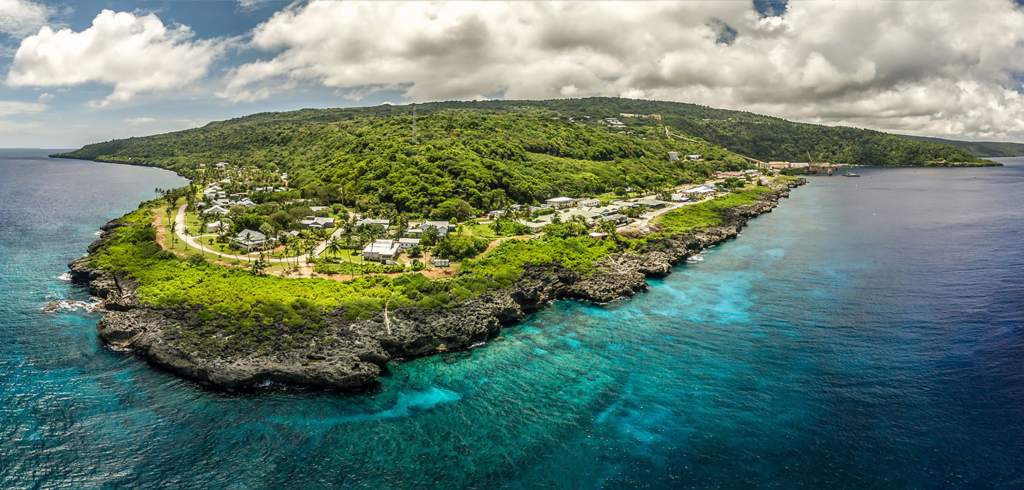
Although not technically an atoll, Christmas Island is a unique and remarkable coral formation located in the Indian Ocean, approximately 360 kilometers (224 miles) south of Java, Indonesia. This island spans an area of approximately 370 square kilometers (143 square miles) and is renowned for its exceptional biodiversity and unique geological features.
Christmas Island is home to a diverse array of terrestrial and marine ecosystems, including lush rainforests, stunning coral reefs, and a remarkable population of endemic species, such as the Christmas Island red crab. Its remote location and limited human impact have preserved its natural beauty, making it a prime destination for scientific research and eco-tourism.
Conclusion
The top 12 largest coral atolls in the world are not only breathtaking natural wonders but also vital ecosystems that support a rich diversity of marine life and play a crucial role in the health of our oceans. From the vast expanses of the Kwajalein Atoll to the pristine beauty of the Farquhar Atoll, these atolls are living monuments to the resilience and adaptability of nature.
However, these delicate ecosystems are facing increasing threats from climate change, pollution, and unsustainable human activities. Rising sea temperatures, ocean acidification, and coastal development are putting immense pressure on coral reefs, jeopardizing the survival of countless marine species and the communities that depend on them.
It is imperative that we recognize the significance of these atolls and take urgent action to protect and conserve them. Through international cooperation, sustainable tourism practices, and the implementation of effective conservation strategies, we can ensure that these natural wonders continue to thrive and provide vital habitats for marine life.
By raising awareness about the importance of coral atolls and promoting responsible stewardship of our oceans, we can inspire a global movement towards the preservation of these precious ecosystems. Only through collective action and a deep appreciation for the intrinsic value of these atolls can we safeguard their beauty and biodiversity for generations to come.

